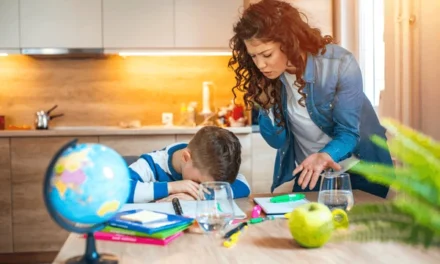n inquisitive aCuriosity is the driving force behind learning, creativity, and discovery. For children, it opens up endless possibilities for exploration and growth. While every child is naturally curious, nurturing this intrinsic quality can help it flourish and lead to lifelong learning. In this article, we explore five proven methods that can spark curiosity in your child and help them navigate the world with wide-eyed wonder.

Importance of Curiosity in Early Development
Curiosity plays a critical role in early childhood development, influencing intellectual, emotional, and social growth. It drives children to ask questions, explore their surroundings, and seek new experiences, all of which are essential for building cognitive abilities. The more curious a child is, the more engaged they become in learning, developing key problem-solving skills and emotional resilience in the process.
When children are encouraged to be curious, they experience higher levels of intrinsic motivation. This allows them to feel more confident in taking initiative, asking questions, and finding solutions to challenges on their own. Early curiosity is linked to enhanced memory retention, better academic performance, and improved social skills as children learn to navigate the complexities of their environments.
The Science Behind a Curious Mind
Curiosity isn’t just a whimsical trait; it’s a vital component of cognitive development. The brain is wired to be curious, constantly seeking information and new experiences to satisfy its need for growth. When a child experiences curiosity, their brain releases dopamine—a neurotransmitter associated with pleasure and motivation. This biological reward system encourages children to repeat behaviors that stimulate learning and exploration.
Research shows that when children are curious, their brains become more receptive to learning new information. Curiosity also enhances problem-solving abilities, allowing children to develop creative ways to approach challenges and think critically. By fostering this trait, parents can help their children create stronger neural pathways associated with memory, learning, and cognitive flexibility.
5 Proven Methods to Spark Curiosity in Your Child
Encouraging Open-Ended Play
Children thrive in environments where they can explore, experiment, and create freely. Open-ended play allows them to engage in activities without rigid rules or outcomes, enabling them to use their imagination and problem-solving skills. Whether it’s building with blocks, drawing with crayons, or dressing up in costumes, open-ended play offers children endless possibilities to explore and grow.
Providing toys like Lego, play dough, or art supplies encourages children to think outside the box and come up with creative solutions to self-directed challenges. Instead of prescribing how a toy should be used, allow your child to take the lead, and you’ll see how their curiosity naturally flourishes.
Cultivating a Question-Friendly Environment

The notorious “why” phase that many children go through is a sign of healthy intellectual curiosity. Creating a space where your child feels safe to ask questions is crucial for fostering their love of learning. Instead of simply providing answers, encourage your child to explore ideas further by asking questions back to them. For example, if your child asks, “Why is the sky blue?” you could respond with, “What do you think makes it that color?”
Being patient and welcoming all kinds of questions helps build trust and curiosity. This back-and-forth exchange not only stimulates their thinking but also deepens their understanding of the world around them.
Engaging with Nature and Outdoor Exploration
The natural world is an endless source of inspiration for curious minds. Outdoor exploration exposes children to new environments, textures, colors, and living creatures that fuel their imaginations. Studies show that children who spend time in nature are more curious and creative, benefiting from unstructured play in a sensory-rich environment.
Simple activities like going on nature walks, collecting rocks, or observing insects can spark questions and curiosity about how the world works. Outdoor exploration also enhances sensory development and helps children appreciate the interconnectedness of the natural world.
Offering Creative Learning Tools

Providing your child with creative tools such as books, puzzles, and STEM (Science, Technology, Engineering, and Math) kits can be a powerful way to encourage curiosity. These tools introduce new concepts in a playful, engaging manner, helping children to connect learning with fun.
Books with open-ended stories or puzzles that require problem-solving foster creativity and critical thinking. Similarly, science kits or building sets help children understand complex ideas by engaging them in hands-on activities. By providing age-appropriate materials, parents can inspire a child’s natural curiosity and support their intellectual development.
Model Lifelong Learning
Children often mimic the behaviors and attitudes of the adults around them, so modeling a love for learning is one of the most effective ways to inspire curiosity. Show enthusiasm for discovering new things, whether it’s reading a new book, learning a new skill, or asking questions yourself. Share your excitement with your child and involve them in your learning process.
For instance, if you are curious about a historical event or how something works, involve your child in researching it together. This not only demonstrates the value of curiosity but also encourages children to view learning as a lifelong journey rather than a finite goal.
How Curiosity Fuels Emotional and Cognitive Development

Children who are encouraged to be curious develop stronger cognitive skills, such as critical thinking and problem-solving abilities. These children are better equipped to tackle challenges independently, think creatively, and adapt to new situations. Curiosity also helps foster emotional intelligence, as children learn to navigate uncertainty and become more comfortable with the unknown.
Curiosity can build resilience by allowing children to face setbacks and obstacles as learning opportunities. When they are encouraged to explore without fear of failure, they become more confident in their abilities and more willing to take risks.
FAQs
How does curiosity affect a child’s overall development?
Curiosity plays a fundamental role in both cognitive and emotional development. It enhances problem-solving skills, promotes critical thinking, and builds emotional resilience. Curious children are more engaged learners and are often more confident and adaptable.
What is the role of parents in fostering curiosity in children?
Parents can foster curiosity by creating an environment that encourages questions, exploration, and creative thinking. Providing open-ended play opportunities, asking questions, and modeling a love for learning are all ways parents can nurture their child’s curiosity.
How can I spark curiosity if my child seems uninterested?
If your child appears disinterested, try introducing new activities or tools that cater to their interests. Outdoor activities, creative play, or engaging learning tools like books and puzzles can reignite curiosity. Sometimes, simply being curious yourself can spark their interest.
**Are there any downsides to encouragingnd open mind, ready to embrace whatever comes their way.






Trackbacks/Pingbacks